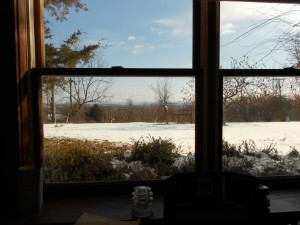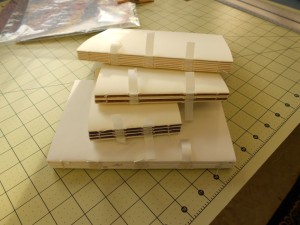About ten years ago, shortly after I moved into this house, I started an herb garden in the middle of my side lawn. I’m not quite sure why I put it there. As it has grown over the years it has become difficult to mow around. Not planned well at all! It is, however, convenient to the kitchen and, since planning doesn’t seem to be my strong point, close enough to run out and grab some parsley or chives on those rare occasions when I actually cook. I love growing herbs, but I really don’t use them much, especially ones like borage and horehound and fennel. They are pretty and smell good too!
My care of this garden has been very hit-and-miss. I usually put in a few annuals like parsley and basil in the spring and see what comes up from the previous year. I hate weeding, so by July, the patch is overgrown with the more invasive herbs as well as weeds and grass. The last few years, I’ve been particularly lax and I had half sage bushes and half chives. Several years ago, I did tear out all the tarragon which threatened to take over everything. The past winter was so cold and so long that it spelled doom for most of the plants. Only a few meager sage stems survived along with a tiny bit of thyme and, of course the chives.
In the face of such devastation, I decided I had to go back to the beginning, dig almost everything up and start fresh. Unfortunately, Mother Nature had other plans. Winter stayed and stayed and stayed. The ground didn’t really thaw until April, followed by cold, raw weather and topped off by a huge storm and a flood that wiped out roads, basements and a house or two. I’m on the side of a hill, so only lost part of my driveway, but the county highway crews estimate it will take months to repair all the damage.
Last week was the first opportunity for me to dig, plant, and redo the border. I didn’t think I’d be able to do it. Since retiring more than ten years ago, I’ve found I can work at hard physical tasks for shorter and shorter lengths of time. If I pace myself, I can do one session in the morning and one in the afternoon. Working around weather that was either too hot or too cold, also provided a challenge. Here are some photos of my recreation of my herb garden. These were taken before I really finished, but just this morning, I placed the last of the border stones, planted the last few herbs and finished mulching. Yes, I know the chives need to be cut back, but they are so pretty! I’ll do it next week.
- Chives
- Borage
- Newly Planted Herbs
- Sage and new plantings
- New plants
- Thyme Border
There’s a border of thyme all around the garden and I’ve used a couple of different varieties. At a college where I once worked they had a “thyme clock”. It was a circular planting, like a sundial, with twelve divisions and a different kind of thyme in each. I’ve forgotten what was used as the gnomon, but I always liked the idea and would love to be able to recreate it.
In the meantime, in the back yard, I was able to quickly put in my standard garden of tomatoes and cucumbers. Earlier, I had gotten from NYS Forestry Service some bare root crab-apple trees and had planted them near an apple tree that I had grown from seed. I think it’s a Pink Lady, but not sure.
- My tomato garden.
- Twenty crab apple trees planted in early May.
- This apple tree has been growing for several years
It still needs a lot of work, but at least everything is in the ground.
Meanwhile, in the basement, I was finishing up three more boxes. Two with detached lids and one clamshell.
- All three boxes.
- Lidded box with bone carving.
- Lidded box with enameled inset.
The two lidded boxes have leather tops. Leather had always been difficult for me to work, but I’m finally beginning to get it and enjoy working with it.
It’s really nice to have a week of finishing, instead of treading water. Of course, without the previous prep work and first steps, there wouldn’t be any finishing! This week, I hope to relax, mulch the garden and think about what’s next.




















































































































































































 Next I tipped in the endpapers and trimmed them to size. An extra 1/4″ is left along the inside fore edge of both endpapers. This is folded under and glued to the first and last pages of the textblock.
Next I tipped in the endpapers and trimmed them to size. An extra 1/4″ is left along the inside fore edge of both endpapers. This is folded under and glued to the first and last pages of the textblock.



